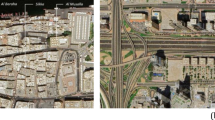Abstract
This research analyzes the spatio-temporal distribution of isolated dwellings; i.e., those with no surrounding neighborhood, throughout Japan for 2009 and 2014 using developed residential micro geodata. We then calculate the lifeline utility maintenance costs and benefits in relation to relocating residents to the city center. The main results are as follows. First, the number of isolated dwellings decreased nationwide although the rate of isolated dwellings increased, predominantly in mountainous areas and remote islands. Second, there was no significant relationship between isolated dwellings and aging rate according to municipality-level aggregated data; however, the aging rate of isolated dwellings was higher than that of non-isolated dwellings according to pinpoint non-aggregated data. Finally, calculations of lifeline utility costs and migration promotion expenses indicate that almost all municipalities in Japan could recover relocation promotion expenses in 13 years, provided that migration promotion expenses are 10 million Japanese yen (JPY) per isolated dwelling. However, convincing residents to agree to relocation can be challenging. Moreover, the benefits of isolated dwellings should also be considered; i.e. ecotourism, cultural values, traditional societies, and freedom of residence. The spatial analysis and modeling results of this study can be used to promote vital public involvement in city management through discussion and information sharing among stakeholders. Therefore, future work will improve the calculation process to promote discussion on sustainable city management.

Source Cabinet Office, Government of Japan 2018)









Similar content being viewed by others
References
Akiyama C, Akiyama Y (2018) Spatial distribution monitoring of isolated dwelling using building micro geodata and its issue. In: Proceedings of international conference on spatial analysis and modeling, pp 1–29
Akiyama Y, Shibasaki R (2008) Spatio-temporal integration method for shop and office data with location information and application for urban and regional analysis. Theory Appl GIS 19(2):57–67
Akiyama Y, Takada T, Shibasaki R (2013) Development of micropopulation census through disaggregation of national population census. In: CUPUM2013 conference papers, #110
Cabinet Office (2018a) Annual report on the aging society: 2018. Cabinet Office, Government of Japan. http://www8.cao.go.jp/kourei/whitepaper/w-2018/html/zenbun/index.html. Accessed 10 Feb 2019
Cabinet Office (2018b) A 2018 declining birthrate white paper. Cabinet Office, Government of Japan.http://www8.cao.go.jp/shoushi/shoushika/whitepaper/measures/w-2018/30webhonpen/index.html. Accessed 10 Feb 2019
Deng C, Ma J (2015) Viewing urban decay from the sky: a multi-scale analysis of residential vacancy in a shrinking U.S. city. Landsc Urban Plan 141:88–99. https://doi.org/10.1016/j.landurbplan.2015.05.002
Japan Water Works Association (2016) Statistics on water supply in 2015
Kaido K (2001) The study of evaluation of urban-life environment by using population density indicator transportation and local facilities in the walking distance area. Pap City Plan 36:421–426. https://doi.org/10.11361/journalcpij.36.421
Kaneki T (2003) Distribution of defunct villages: a study on process of defunct villages after world war II in Japan Part1. J Archit Plan (Trans AIJ) 68(566):25–32. https://doi.org/10.3130/aija.68.25_4
Kawagoe T (1999) Agricultural land reform in postwar Japan: Experiences and issues. World Bank Policy Research Working Paper 2111. https://doi.org/10.1596/1813-9450-2111
Mallach A, Haase A, Hattori K (2017) The shrinking city in comparative perspective: contrasting dynamics and responses to urban shrinkage. Cities 69:102–108. https://doi.org/10.1016/j.cities.2016.09.008
Miller HJ (2004) Tobler’s first law and spatial analysis. Ann Assoc Am Geogr 94:284–289. https://doi.org/10.1111/j.1467-8306.2004.09402005.x
Ministry of Agriculture, Forestry and Fisheries (2017) Statistics on farmland. http://www.maff.go.jp/j/tokei/sihyo/data/10.html. Accessed 10 Feb 2019
Ministry of Land, Infrastructure (1970) Government Order on Road Design Standards (No.320). http://www.mlit.go.jp/road/sign/kouzourei_kaisetsu.html. Accessed 29 Oct 1970
Ministry of Land, Infrastructure, Transport and Tourism (2017) Promotion of urban renovation and compact cities. http://www.mlit.go.jp/common/000996976.pdf. Accessed 10 Feb 2019
Morimoto Y (2011) What is Satoyama? Points for discussion on its future direction. Landsc Ecol Eng 7(2):163–171. https://doi.org/10.1007/s11355-010-0120-5
Morita M, Suzuki K, Okunuki K (2014) An empirical study of the ratio of the road distance to the straight line distance in major cities in Japan. Theory Appl GIS 22(1):1–7
Muramatsu N, Akiyama H (2011) Japan: super-aging society preparing for the future. The Gerontologist 51:425–432. https://doi.org/10.1093/geront/gnr067
Nagata S, Nakaya T, Akiyama Y (2015) Neighborhoods that lost food access by walk during the period of 2010–2013 in Japan. Proc General Meet Assoc Jpn Geogr Spring 2015:70. https://doi.org/10.14866/ajg.2015s.0_100276
Nishino T (2016) Inquiry into the state of ‘daily living areas’ of the elderly in a local city with a comparison of areas. Trans AIJ J Archit Plan Environ Eng 81(728):2117–2127. https://doi.org/10.3130/aija.81.2117
Okahashi H (1986) Rural deprivation in mountainous areas of Japan. Jpn J Human Geogr 38(5):461–479. https://doi.org/10.4200/jjhg1948.38.461
Ozeki Y, Togawa T, Suzuki Y, Kato H, Hayashi Y (2010) Evaluation method for maintenance and renovation costs of the future infrastructure in the metropolitan area. J Jpn Soc Civ Eng Ser D3 (Infrastruct Plan Manag) 27:305–312. https://doi.org/10.2208/journalip.27.305
Sa E, Ardern CI (2014) Neighbourhood walkability, leisure-time and transport-related physical activity in a mixed urban-rural area. PeerJ 2:e440. https://doi.org/10.7717/peerj.440
Sakaguchi K (1975) Processes and factors of village desertion: a case study of Ogose and Ohmi in the vicinity of Kyoto. Jpn J Human Geogr 27(6):579–610. https://doi.org/10.4200/jjhg1948.27.579
Sakuno H (2013) Consideration on the geographical characteristics of abandoned settlements of hilly mountainous regions in Japan: subsequence. Proc Gen Meet Assoc Jpn Geogr Spring 2013:79. https://doi.org/10.14866/ajg.2013s.0_79
Takahashi K (2018) How to maintain a rural settlement through screening and accepting I-Turn migrants in Amami-oshima Island, Japan. E-J GEO 13(1):50–67. https://doi.org/10.4157/ejgeo.13.50
Acknowledgements
This work was supported by JSPS KAKENHI, Grant Numbers JP 15K12453 (Grant-in-Aid for Challenging Exploratory Research), JP 16K21595 (Grant-in-Aid for Young Scientists (B)), and the Joint Usage/Research Center, Research Center for San-En-Nanshin Regional Collaboration, Aichi University. In addition, authors were provided residential maps of Japan by CSIS, The University of Tokyo (joint research No. 122 and No. 695).
Author information
Authors and Affiliations
Corresponding author
Additional information
Publisher's Note
Springer Nature remains neutral with regard to jurisdictional claims in published maps and institutional affiliations.
About this article
Cite this article
Akiyama, C.M., Akiyama, Y. Spatial distribution and relocation potential of isolated dwellings in Japan using developed micro geodata. Asia-Pac J Reg Sci 3, 605–621 (2019). https://doi.org/10.1007/s41685-019-00106-x
Received:
Accepted:
Published:
Issue Date:
DOI: https://doi.org/10.1007/s41685-019-00106-x
Keywords
- Isolated dwelling
- Remote location
- Lifeline maintenance cost
- Relocation promotion expenses
- The residential map
- Micro geodata




